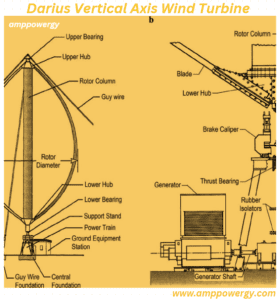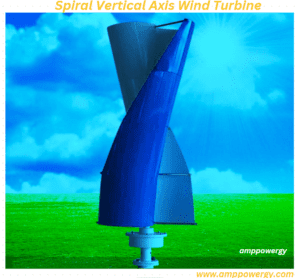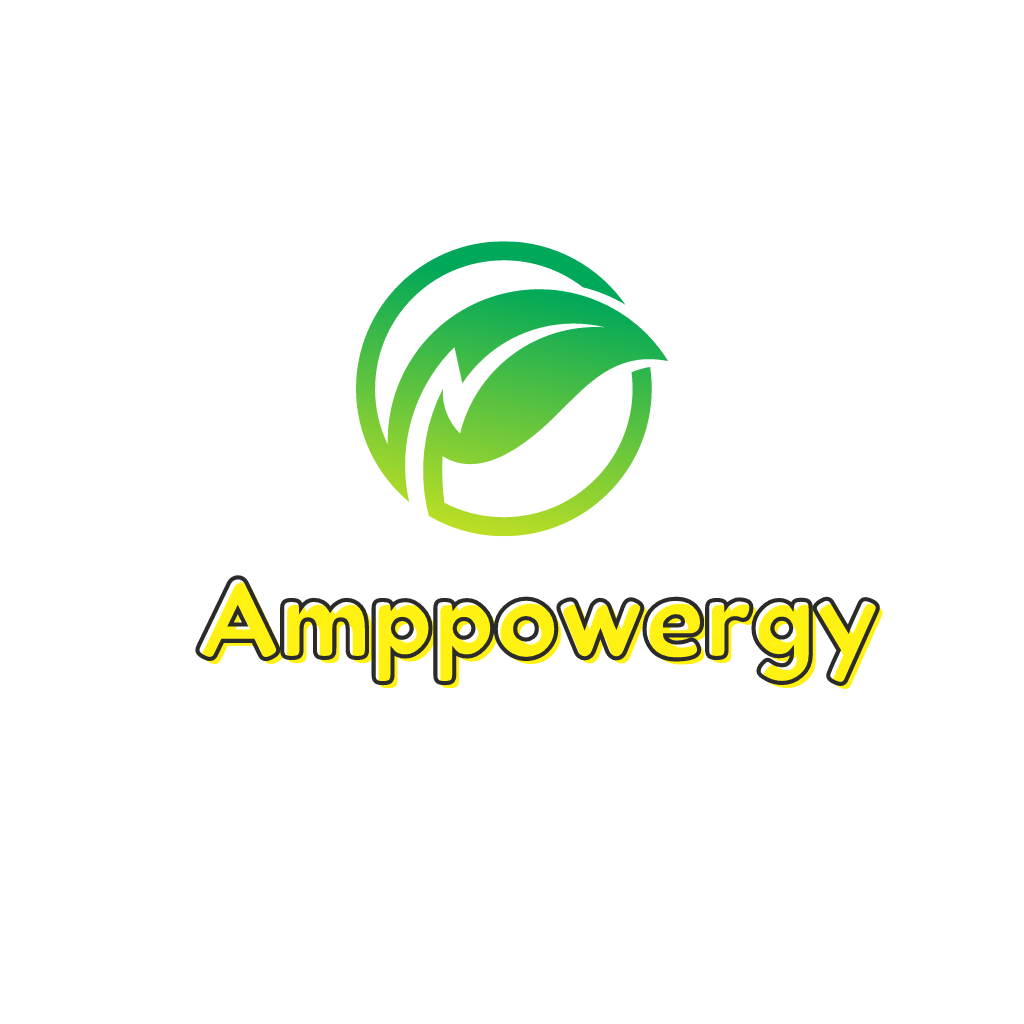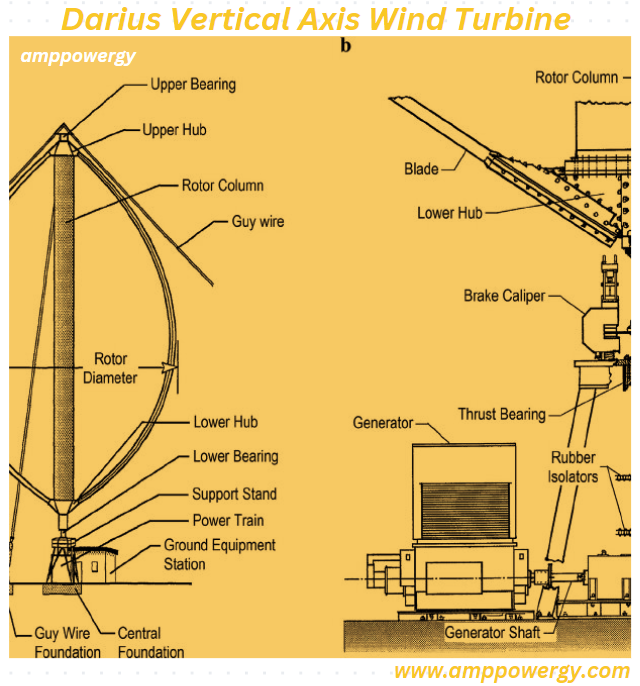What is a vertical axis wind Turbine?
A vertical axis wind turbine (VAWT) is a type of wind turbine where the central rotor shaft is set close to the ground, unlike a horizontal axis wind turbine (HAWT), where the shaft is parallel to the ground. A VAWT has blades that rotate around a vertical axis. This design allows the turbine to capture wind from any direction without the need for a mechanism to turn the turbine into wind.
VAWTs come in a variety of designs, such as Darius, Savonius, and Helical or spiral vertical axis wind turbines. The blades of these turbines create lift or drag as the wind passes over them, causing the rotor to rotate and converting the wind’s kinetic energy into mechanical energy. This mechanical energy is then used to generate electricity, usually through a generator attached to the shaft of a turbine.

Darius vertical-axis wind turbine (VAWT)
The Darius vertical-axis wind turbine (VAWT) is a specific type of VAWT named after its French inventor, Georges Darius. It has a unique design in which two or more airfoil-shaped blades are attached to a central vertical shaft in a helical or egg-beater configuration. Darius turbines rely on the lift generated by curved blades as they move through the wind to capture wind energy and convert it into rotational motion.

Key features of Darius VAWT include
Blade Design: Blades are usually curved, or airfoil shaped to produce lift. The airfoil design allows the blade to use wind energy efficiently.
Helical arrangement: The blades are arranged around a central vertical shaft in a helix or eggbeater shape. This configuration enables the turbine to capture wind from different directions.
Startup mechanism: Darius turbines often require an external mechanism or auxiliary power source to start rotation, as they can struggle to start themselves at low wind speeds. Once in motion, they can continue to generate electricity even at high wind speeds.
High speed rotation: Darius turbines rotate at a higher speed than some other types of wind turbines. This rapid rotation can pose challenges in terms of structural integrity and vibration.
Low cut-in speed: Darius turbines are known for their ability to start working at relatively low wind speeds. This makes them suitable for locations with moderate or variable wind conditions.
Cyclic loading: One of the challenges with Darius turbines is that they experience cyclic loading during each rotation, which can cause fatigue and structural problems. This can affect the overall durability of the turbine.
Self-starting capability: Some Darius designs include self-starting capability, allowing the turbine to start spinning without external power or the need for additional mechanisms.
Despite these advantages, the Darius VAWT faces some challenges, including lower efficiency compared to horizontal axis wind turbines, difficulty in achieving high rotational speeds, and increased stress on the blades during operation.
As a result, Darius turbines are often used in smaller-scale applications, such as residential or small commercial installations, where their specific advantages may outweigh their limitations. Research and Development Darius continues to look for ways to improve VAWT performance and reliability.
Savonius vertical axis wind turbine (VAWT)
The Savonius vertical axis wind turbine (VAWT) is a type of wind turbine named after its Finnish inventor, Sigurd J. Savonius. It is characterized by its simple and robust design, which includes curved blades that catch the wind from any direction. The Savonius VAWT is known for its simplicity, ease of construction, and ability to operate in low wind speeds.

Key features of Savonius VAWT include:
Design: A sinusoidal turbine typically has two or three scoop-shaped blades arranged in a vertical direction and connected to a central shaft. The design resembles a vertically oriented “S” shape, and the turbine can rotate regardless of wind direction.
Low wind speed operation: One of the advantages of the Savonius design is the ability to operate efficiently at low wind speeds. This makes it suitable for applications in areas with variable or unpredictable wind conditions.
Self-starting: A Savonius turbine is often self-starting, which means it can start rotation without the need for external power or a complex control system. This is attributed to the scooping action of the blades, which can capture air and initiate circulation.
Simple Construction: Compared to some other types of wind turbines, the Savonius VAWT is relatively simple to construct and maintain. Its simplicity makes it an attractive option for some small-scale or DIY wind power projects.
While the Savonius VAWT has its advantages, it also comes with limitations, including lower efficiency compared to more modern horizontal axis turbines. As a result, Savonius turbines are often used in applications where simplicity and low cost are more important than maximum energy efficiency, such as small-scale or experimental wind power projects.
Helical or Spiral Vertical-axis Wind Turbine (VAWT)
A helical or spiral vertical-axis wind turbine (VAWT) is a type of VAWT design that involves curved or helical blades around a vertical axis. Unlike traditional straight-bladed VAWTs, the helical design aims to improve efficiency and solve some of the challenges associated with other VAWT configurations. These turbines are sometimes called “helical Savonius” or “twisted Savonius” turbines.

Key features of helical VAWTs include
Blade Design: Instead of straight blades, helical VAWTs have blades that bend or curve along their length, creating a helix or spiral shape. The purpose of this design is to capture more wind energy and increase the efficiency of the turbine.
Omni-directional wind capture: Like other VAWTs, helical turbines can capture wind from any direction, allowing them to be more versatile in changing wind conditions.
Low wind speed operation: Helical VAWTs are often designed to start rotating at relatively low wind speeds, making them suitable for locations with variable or low wind conditions.
Compact Design: The helical blade design can allow for a more compact turbine structure than some other VAWT designs. This is very useful in low space.
Reduced Vibration: The purpose of the helical design is to reduce vibration and improve the overall stability of the turbine during operation.
Although the helical design offers some advantages, it is important to note that the overall performance and efficiency of a wind turbine depends on various factors, including the specific design, the materials used, and the wind conditions at the installation site.
Research and development in the field of helical VAWT continues to explore ways to optimize these turbines for various applications. Helical VAWTs are often considered for small-scale and distributed energy production, such as residential or community wind power projects.
Application of Vertical Axis Wind Turbine (VAWT)
Vertical axis wind turbines (VAWT) find a wide variety of applications ranging from small scale residential use to large commercial or industrial installations. Some common applications of VAWT are:
Application in Residential and Small-Scale Power Generation
Off-Grid Power: VAWT can be used to generate electricity for individual homes, cabins or small communities in off-grid or remote areas where connecting to the main power grid may be difficult or expensive.
Small businesses: Some small businesses or agricultural operations may use VAWT to meet their energy needs.
Application in Urban environment
Building Integrated Wind Turbines: VAWTs are suitable for urban environments where space is limited, and wind direction is unpredictable. Building integrated turbines can be installed on rooftops or other urban spaces to harness wind energy.
Application in Educational and Research Objectives
Learning Tool: VAWTs are often used in educational settings to teach students about renewable energy and wind power technologies.
Research: Researchers can use small-scale VAWT prototypes to test new designs and study the performance of vertical axis turbines.
Application in Water Pumping
Water pumping stations: VAWT can be used to power water pumping stations in rural areas, providing a sustainable and reliable source of energy for agricultural irrigation or community water supply.
Application in Hybrid System
Combined with solar energy: VAWT can be integrated into a hybrid renewable energy system with solar panels, providing more consistent energy production by using wind and solar energy.
Application in Telecommunications
Remote Communication Towers: In off-grid or remote areas, VAWT can be used to power telecommunication towers, ensuring that communication infrastructure remains operational.
Application in Aesthetic installations
Public spaces: In some cases, VAWTs are installed in public spaces for aesthetic purposes, to raise awareness about renewable energy and to act as a visual representation of sustainable technologies.
Application in Emergency Power
Disaster Relief: VAWTs can be part of emergency response systems, providing power after natural disasters where conventional power sources may be disrupted.
It is worth noting that although VAWTs have certain advantages, such as versatile wind capture and the ability to operate in low wind speeds, they are larger than horizontal axis wind turbines (HAWTs). are generally less common in utility applications. The choice of turbine type depends on factors such as site characteristics, wind conditions, and energy requirements.
Advantage of Vertical Axis Wind Turbine (VAWT)
Versatile wind capture: VAWTs can capture wind from any direction, making them suitable for areas where wind direction is variable or unpredictable.
Low wind speed operation: VAWTs can start generating power at lower wind speeds than some horizontal axis wind turbines (HAWTs). It is beneficial in locations with moderate or fluctuating wind conditions.
Simplicity of design: VAWTs often have simpler designs than HAWTs, resulting in easier maintenance and potentially lower construction costs.
Compact size: The vertical orientation of the rotor allows for a more compact turbine design, making it suitable for VAWT applications where space is limited.
Fewer impacts on wildlife: Some argue that VAWTs may have fewer negative impacts on wildlife, as the rotating blades are often at a lower height and rotate less than some HAVTs. The speed slows down.
Disadvantages of Vertical Axis Wind Turbine (VAWT)
Low efficiency: In general, VAWTs have lower efficiency than HAWTs, especially in large-scale applications. This is due to factors such as increased drag and lower tip speed ratio.
Structural stress: VAWTs can experience rotational loading during each rotation, which can cause structural stress and potential fatigue problems. This can affect the durability of the turbine.
Limited Scalability: VAWTs are often more suitable for small- to medium-scale applications, and their design may not be easily scalable for large utility-scale wind farms.
Complex aerodynamics: The aerodynamics of a VAWT can be more complex than that of a HAWT, making the design and optimization of these turbines more difficult.
Noise generation: Some VAWTs can generate more noise than THAT, which can be a concern in residential or urban environments.
Limited commercial development: VAWTs have seen less commercial development and deployment in large-scale wind farms than HAWTs, which have become more entrenched in the wind energy industry.
The choice between VAWT and HAT depends on factors such as site characteristics, wind conditions, and specific requirements of the intended application. Although VAWTs have advantages in some contexts, ongoing research and development aims to address their limitations and improve their overall performance.
See Also:
Frequently Asked Questions (FAQs)
Q: What is a vertical axis wind turbine (VAWT)?
Ans: A VAWT is a type of wind turbine where the main rotor shaft is arranged vertically, and the blades rotate around this vertical axis. It is an alternative to the more common horizontal axis wind turbine (HAWT).
Q: How does VAWT differ from THAWT?
Ans: VAWT has a vertical axis of rotation, while HAVT has a horizontal axis. VAWTs often have unique blade designs and can capture wind from any direction.
Q: What are the benefits of VAWT?
Ans: Some of the advantages include versatile wind capture, suitability for low wind speed conditions, simplicity of design, and more compact size than some HAVTs.
Q: What are the disadvantages of VAWT?
Ans: Common disadvantages include lower efficiency compared to HAWT, structural stresses due to rotational loading, limited scalability for large-scale applications, and potential noise generation.
Q: Where are VAWTs commonly used?
Ans: VAWTs are typically used in small-scale and decentralized applications, such as residential power generation, rural power supply, and building-integrated installations.
Q: Can VAWT be used in an urban environment?
Ans: Yes, VAWTs can be suitable for urban environments because of their ability to capture air from any direction and their compact design. They are often used for building integrated applications.
Q: What is the age of VAWT?
Ans: The life of a VAWT depends on factors such as material quality, maintenance practices and operating conditions. In general, a well-maintained VAWT can have a lifespan of 20 years or more.
Q: How do VAWTs start generating electricity?
Ans: VAWTs can start generating electricity at lower wind speeds than some HAWTs. The blades are designed to catch air and start spinning, which starts generating electricity.
Q: Are VAWTs quieter than HAWTs?
Ans: The noise produced by a wind turbine depends on a variety of factors, including design, size, and wind speed. Some VAWTs may produce less noise than some HAVTs, but noise levels may vary.
Q: Are VAWTs suitable for large-scale wind farms?
Ans: Although VAWTs have advantages, such as versatile wind capture, they are generally underutilized in large-scale wind farms. HAWTs are more common in utility-scale applications due to their high efficiency.



Here, I’ve read some really great content. It’s definitely worth bookmarking for future visits. I’m curious about the amount of work you put into creating such a top-notch educational website.
Yes, you are absolutely right. This website is obviously put gread contents.